Antique teddy bears hold a special charm that no modern toy can replace. But how do you know if the old bear on your shelf is an authentic antique teddy bear or just a vintage one? Knowing what to look for will help you appreciate your bear’s history and maybe even discover a hidden treasure.
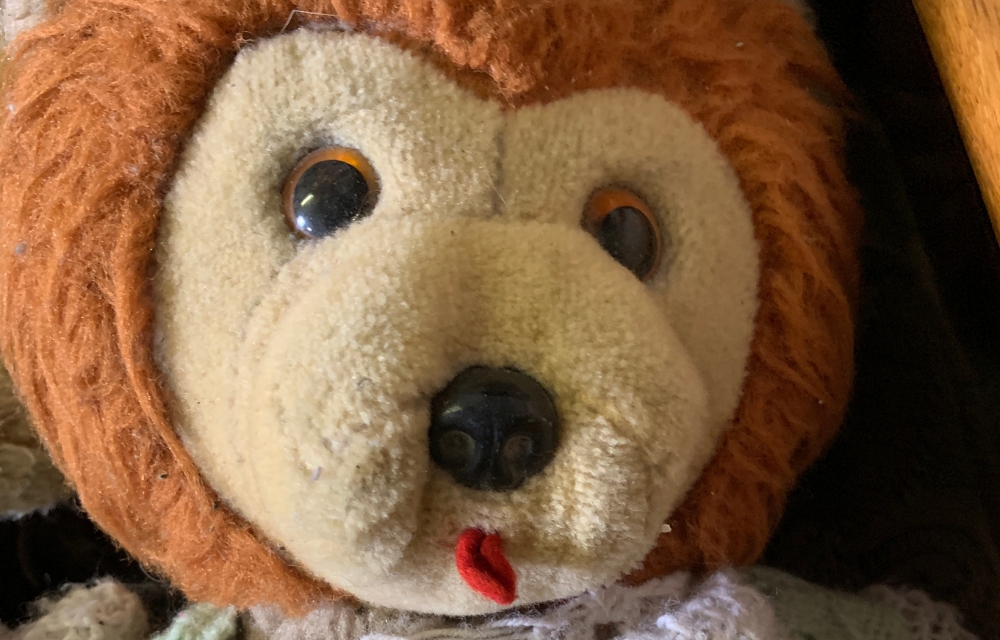
What Makes a Teddy Bear Antique
Before diving into details, it helps to understand what makes a teddy bear antique. Generally, collectors agree that teddy bears made before the 1940s are considered antique. These bears are often over 80 years old, crafted with traditional methods and materials that have long since disappeared from modern production.
Key Features of Antique Teddy Bears
Material
The first sign is the fur. Most true antique teddy bears are made from mohair, a silky fabric woven from the hair of Angora goats. This material has a soft shine and ages beautifully. If your bear’s fur feels rough, thin, or patchy with a slight sheen, it might be mohair.
Eyes
Many antique teddy bears have glass eyes, often dark and slightly uneven. Some older bears might have lost an eye or two, which only adds to their story.
Nose and Mouth
Inspect the stitching on the nose and mouth. In early bears, these were hand-stitched with black or brown thread. Look for signs of handwork, such as uneven stitches or threads that have faded with age.
Joints
Classic antique teddy bears almost always have jointed limbs and heads. Early bears used metal or wooden disks and pins known as cotter pins. Try gently moving the arms and legs—do they rotate smoothly? If so, that’s a good clue.
Labels and Tags
Some famous makers like Steiff, Farnell, or Merrythought added metal buttons or cloth labels to their bears. Unfortunately, many old labels are lost with time. Still, look inside the ear, under the arm, or near a seam—sometimes a tiny remnant remains.
Signs of Age
True antique teddy bears rarely look perfect. They often have bald patches, matted fur, or old repairs. Some might be missing stuffing or have replacement parts lovingly added by previous owners.
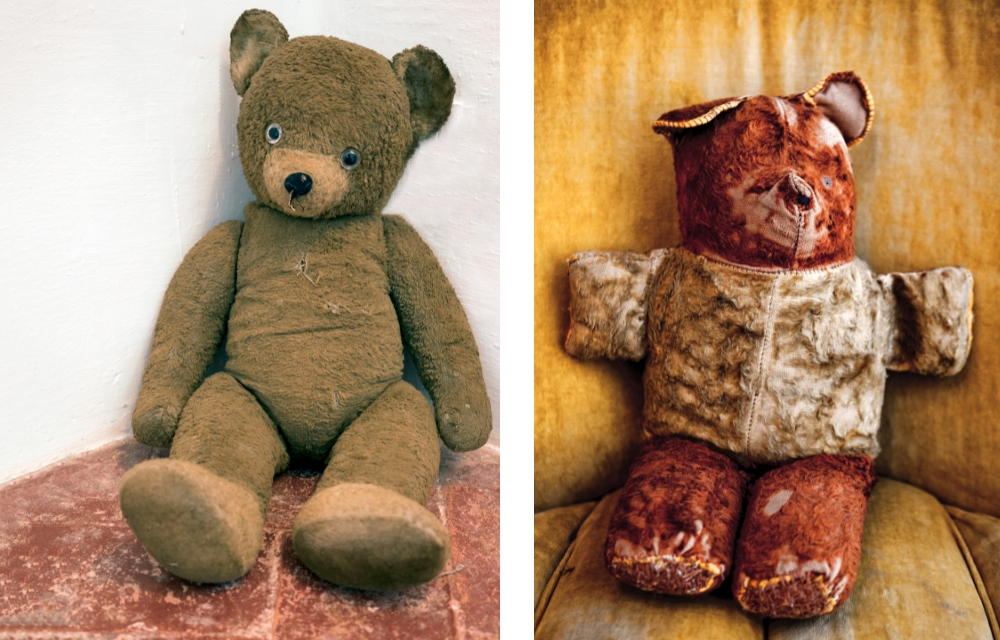
How to Identify Antique Teddy Bears Without Labels
No tag? No problem. Many antique teddy bears have survived decades without their original markers. Start by comparing your bear to online archives, old catalog scans, and collector guides. The three parts of our Ultimate Guide to Vintage Teddy Bear Identification offer tips for studying head shapes, ear placement, and body proportions.
If you’re stuck, join teddy bear collector communities. Forums and Facebook groups are goldmines for finding people who might recognize your mystery bear. Another practical tip is to browse auction listings for bears that look similar. Sites like Christie’s Teddy Bear Auctions often have detailed descriptions you can learn from.
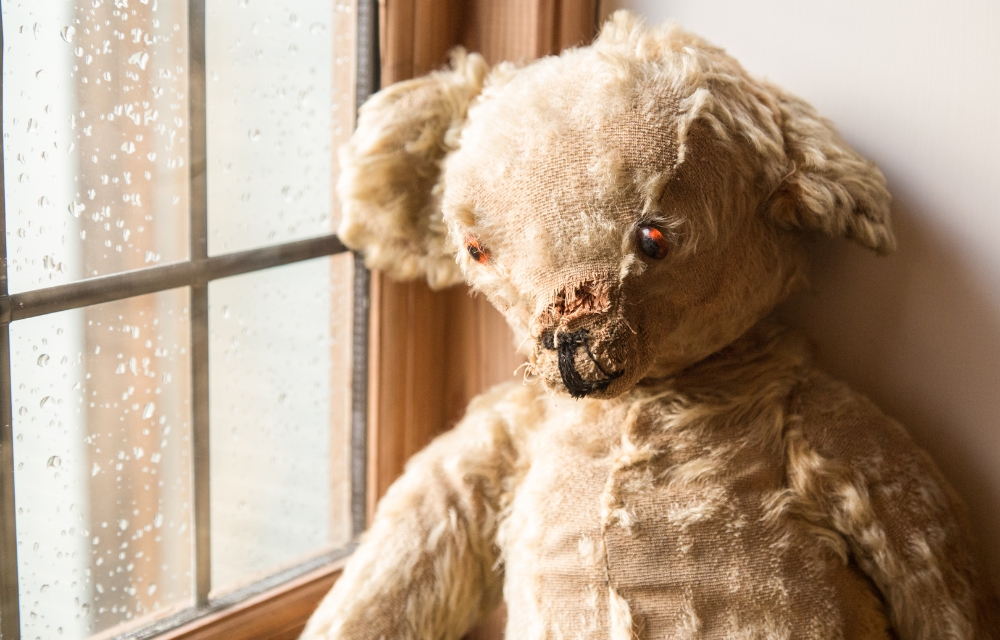
Tools and Resources to Help
A good magnifying glass can reveal stitching details and tiny marks you might miss otherwise. Keep a notebook with photos and measurements of your bear. Libraries often have collector books with detailed photos—these can help match features to specific makers and eras.
Still Can’t Pin Down Your Bear?
Sometimes a bear’s story remains partly a mystery. That’s okay. Handle it gently, store it away from sunlight and moisture, and enjoy knowing you have a piece of history in your home. If you’re curious about caring for delicate mohair fur, our Why Antique Mohair Teddy Bears Are a Must-Have for Collectors has extra care tips you might find handy.
Knowing how to identify antique teddy bears isn’t always quick, but it’s a rewarding journey. Each clue brings you closer to the story behind your bear’s worn paws and well-loved expression. And who knows—maybe your attic find is a forgotten treasure waiting to be rediscovered.
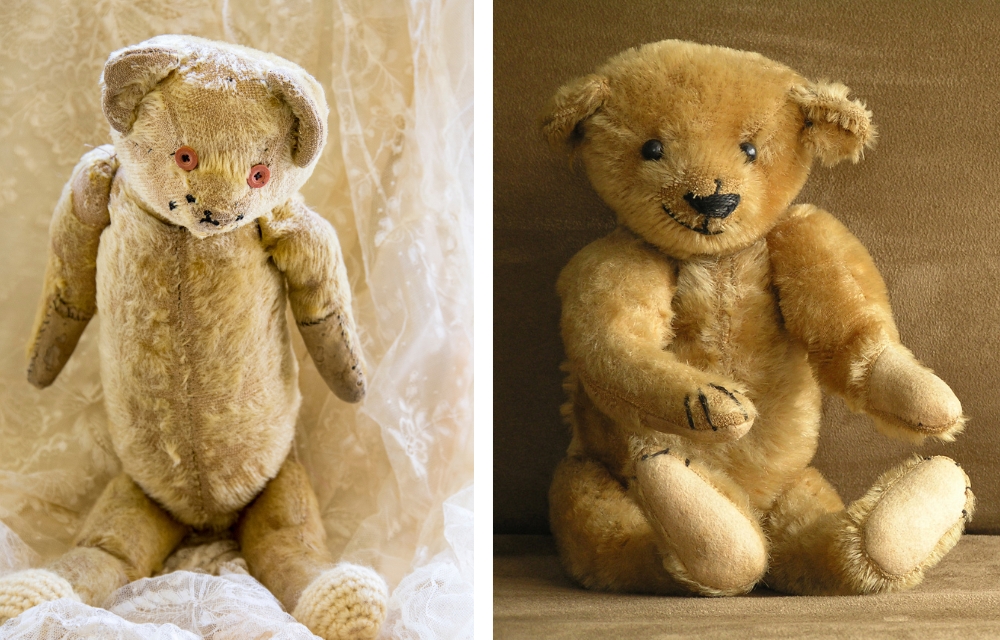
Frequently Asked Questions (FAQs)
1. What exactly makes a teddy bear “antique”?
Generally, teddy bears made before the 1940s are considered antique. They’re usually over 80 years old and made using traditional materials like mohair and jointed limbs, which differ from modern bears.
2. How can I tell if my teddy bear is made from mohair?
Mohair is soft, silky, and has a subtle sheen. It can feel a bit rough or patchy if it’s aged, but it’s not fuzzy like synthetic fur. If you’re unsure, compare your bear’s fur to photos or descriptions in our article about antique mohair teddy bears.
3. What should I look for in the eyes of an antique teddy bear?
Most antique bears have glass eyes that may be slightly uneven or even missing due to age. Plastic eyes are usually a sign of newer bears.
4. Can I identify an antique teddy bear if it doesn’t have any labels or tags?
Yes! Many antique bears have lost their labels over time. You can study the shape of the head, ear placement, and body proportions, or compare your bear to online archives and collector guides. Joining collector communities can also be a huge help.
5. Are repairs or missing parts common in antique teddy bears?
Absolutely. It’s normal for antique bears to have bald patches, matted fur, or even replacement parts added by previous owners. These signs often add character and history to the bear.
6. How should I care for my antique teddy bear?
Handle it gently and avoid direct sunlight or moisture. If your bear has mohair fur, check out our care guide for tips on preserving its delicate fabric.
Get Free Patterns & Be the First to Know!
Want free teddy bear patterns, exclusive tutorials, and a chance to win craft supplies?
Sign up for our newsletter using the subscribe form in the middle of this article to receive new patterns, insider tips, and the latest news on teddy bear art. You’ll also automatically be entered into our annual giveaway for a chance to win teddy bear crafting materials.
Bonus entry: Save one of our pins on Pinterest to increase your chances of winning!
Let’s create, inspire, and craft beautiful teddy bears together!

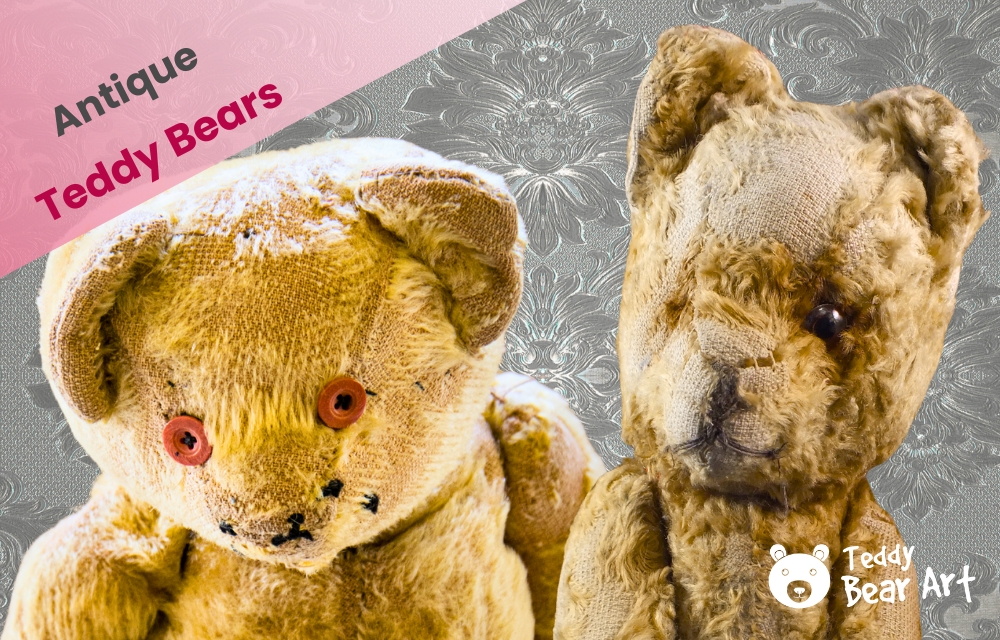
Who knew teddy bear archaeology was a thing?
I started this thinking “cute fluff,” and left wondering if my childhood teddy bear was secretly a mohair-clad time traveler with glass eyes and cotter-pin joints. The detective work involved in identifying antique bears is much more than I imagined at the start of the post.
Next time I see a worn-out plush toy I might just ask it for its birth certificate. 🙂
Great read & thank you!
Haha, love this!
Teddy bear archaeology is absolutely a thing — who knew these little fluff balls were hiding so many secrets? Your childhood bear might be a tiny time traveler in a mohair coat — better keep an eye on those glass eyes at night! ????
Next time you spot a scruffy old teddy, give it a gentle squeeze — you might be hugging a piece of history.
Thanks so much for reading and sharing this — your comment made my day!
Hanna,
Thank you for such an interesting and informative article! I’m really curious — could you please share if there are any specific features or details that can help distinguish an antique teddy bear from a well-made modern replica? Sometimes the replicas look so authentic that it’s hard to tell the difference. It would be wonderful to see some examples or tips to help identify the real antiques!
Kind regards,
Martin
Here are some more precise details that can help identify an antique teddy bear:
Smell and condition of materials. Old bears often have a characteristic “timeworn” smell and slightly yellowed mohair, while replicas tend to have “fresh” materials and a different scent.
Seams and craftsmanship. Vintage bears were sewn by hand, with specific stitch characteristics, whereas modern copies may use machine stitching or slightly different techniques.
Markings and labels. Original bears often have antique tags, stamps, or factory marks that are difficult to accurately reproduce.
Condition of hardware. Buttons, joint fasteners, and eyes may develop tiny cracks or a natural patina over time, which looks different from new hardware even when artificially aged.
To be certain, expert appraisal or comparison with reliably identified originals is often necessary.